In the realm of modern healthcare and wellness practices, the 2-section treatment table has emerged as an essential piece of equipment for therapists, practitioners, and massage therapists. These versatile tables provide a comfortable surface for clients to lie on during treatments, examinations, or therapy sessions. What sets them apart and elevates their significance is the range of customizable features they offer, ensuring an optimal experience for both clients and professionals.
The Basic Components of a 2-Section Treatment Table
Before delving into the world of customizable features, it's crucial to understand the fundamental structure of a 2-section treatment table. These tables consist of two main sections: the head section and the body section.
The head section is where the client's head, neck, and shoulders rest during treatments. It often comes with a face cradle that allows for comfortable face positioning and a nose hole to reduce pressure on the sinuses. Additionally, the head section may have adjustable armrests that provide extra support and comfort during certain treatments.
The body section is where the client's body lies. It often features a tilting functionality that enables various treatment positions, promoting relaxation and enhancing the efficacy of the therapy. Furthermore, some models come with built-in lumbar support, ensuring the client's lower back receives adequate cushioning and comfort.
Height Adjustment: Accommodating Patients of Different Sizes
In the realm of healthcare and wellness, providing comfortable and personalized care to patients is of utmost importance. One essential aspect that contributes to this experience is the ability to accommodate patients of different sizes. This is particularly crucial when it comes to treatment tables, as patients come in various heights, and a one-size-fits-all approach simply won't suffice. Height adjustment features in treatment tables play a pivotal role in addressing this issue and ensuring that patients receive optimal care regardless of their stature.
The Significance of Height Adjustment
Height adjustment in treatment tables allows healthcare professionals to modify the table's height to suit the specific needs of each patient. Not all patients are of the same height, and using a fixed-height table can lead to discomfort for both the patient and the healthcare provider.
When a treatment table can be easily adjusted to the ideal height, it ensures proper patient positioning and accessibility. For taller patients, a higher table setting prevents them from feeling cramped or confined during treatments. On the other hand, shorter patients benefit from a lower table setting that allows their feet to comfortably touch the ground.
Electric Height Adjustment vs. Manual Height Adjustment
There are primarily two types of height adjustment mechanisms commonly found in treatment tables: electric and manual.
Electric height adjustment is a popular choice in modern healthcare settings due to its convenience and ease of use. A motorized system allows the table's height to be adjusted smoothly and effortlessly with the push of a button. This is especially beneficial for healthcare providers who need to make frequent adjustments between patients of varying heights. Electric height adjustment is also beneficial for patients with mobility issues, as they can easily access the table without any assistance.
On the other hand, manual height adjustment involves using a hydraulic or pneumatic system to change the table's height. This type of adjustment requires physical effort from the healthcare provider to raise or lower the table. While manual adjustment may lack the instant ease of electric mechanisms, it offers reliability and does not rely on electricity or batteries. Some healthcare professionals prefer manual height adjustment for its simplicity and cost-effectiveness.
Benefits of Accommodating Patients of Different Sizes
Accommodating patients of different sizes through height adjustment features offers several benefits:
- Enhanced Patient Comfort: A properly adjusted treatment table ensures that patients can lie down comfortably during examinations, treatments, or therapy sessions. This promotes relaxation and trust between the patient and the healthcare provider.
- Improved Accessibility: Patients with mobility issues or physical limitations can easily access the treatment table when it can be adjusted to a suitable height. This promotes inclusivity and ensures that all patients receive the care they need.
- Efficient Workflow: Healthcare providers can seamlessly transition between patients without the need for constant adjustments or compromising their posture. This streamlines the workflow and allows for more efficient patient care.
- Reduced Strain and Fatigue: Adjustable treatment tables contribute to better ergonomics for healthcare professionals. They can position the table at an ideal height that minimizes strain on their back and shoulders, reducing the risk of work-related injuries.
Choosing the Right Treatment Table with Height Adjustment
When selecting a treatment table with height adjustment capabilities, there are a few key factors to consider:
- Range of Height Adjustment: Check the minimum and maximum height settings of the table to ensure it can accommodate both shorter and taller patients effectively.
- Sturdiness and Stability: The table should be stable and robust, especially when adjusting to different heights. Stability is crucial for patient safety during treatments.
- Ease of Adjustment: If opting for an electric height adjustment mechanism, ensure that the control panel or remote is user-friendly and intuitive.
- Quality of Materials: Choose a treatment table made from high-quality materials that ensure durability and longevity.
Customizable Head Section Options
- The head section of a 2-section treatment table can be further customized with various options. The face cradle is an essential accessory that allows the client to rest their face comfortably while lying face down. This simple addition significantly enhances the overall comfort and relaxation during treatments.
- The nose hole is another crucial feature, especially for clients who experience discomfort when lying flat on their stomach. The nose hole provides relief for the sinuses and allows for uninterrupted breathing.
- Armrests on the head section provide additional support for the arms, which is particularly useful during massage or physical therapy sessions. Clients can rest their arms comfortably, reducing tension and enhancing relaxation.
Exploring Body Section Adjustments
The body section of a 2-section treatment table offers several adjustable options that contribute to the client's comfort and the therapist's efficacy. The tilting functionality allows the therapist to position the client in various angles, facilitating specific treatments or enhancing relaxation during massages.
Another essential adjustment is lumbar support. This feature provides extra padding and cushioning for the lower back, promoting better alignment and reducing pressure on the lumbar region. Clients with lower back issues can greatly benefit from this customizable option.
Angle Adjustments for Optimal Patient Positioning
In the world of healthcare and medical treatments, patient comfort and positioning are critical factors that significantly impact the effectiveness of therapies and examinations. Angle adjustments in medical equipment, such as treatment tables and examination chairs, play a crucial role in achieving optimal patient positioning. These adjustable features allow healthcare professionals to customize the angle at which the patient lies or sits, ensuring comfort, safety, and the best possible treatment outcomes.
The Significance of Angle Adjustments
Angle adjustments in medical equipment are designed to accommodate various medical procedures, therapies, and patient needs. Not all treatments or examinations require patients to be in a completely flat or upright position. In fact, many medical procedures require specific angles to access certain body areas or create optimal conditions for effective treatments.
By offering angle adjustments, medical equipment provides healthcare professionals with the flexibility to position patients in a way that facilitates the procedure and enhances patient comfort. Whether it's for physical therapy, chiropractic adjustments, or general medical examinations, being able to customize the angle of the equipment ensures a more tailored and effective approach to patient care.
Types of Angle Adjustments
Angle adjustments can be found in various medical equipment, including treatment tables, examination chairs, and even specialized medical devices. Some common types of angle adjustments include:
- Tilt Functionality: Many treatment tables come with a tilting feature that allows the head or body section to be raised or lowered. This is particularly useful in procedures that require the patient to be in a semi-reclined or elevated position.
- Articulating Headrests: Examination chairs often have articulating headrests that can be adjusted to different angles. This allows healthcare professionals to position the patient's head optimally for specific examinations or treatments.
- Leg Support Adjustments: In some medical equipment, the leg support or footrest can be adjusted to different angles. This is beneficial for procedures that involve the lower extremities, such as podiatry treatments or vascular examinations.
- Backrest Adjustments: Certain examination chairs or treatment tables offer backrest adjustments, allowing patients to sit upright or recline during treatments or post-examination recovery.
Benefits of Optimal Patient Positioning
Achieving optimal patient positioning through angle adjustments offers several benefits for both patients and healthcare professionals:
- Patient Comfort: By customizing the angle, patients can experience greater comfort during procedures or therapies. This can help reduce anxiety and improve overall patient satisfaction.
- Enhanced Access: Angle adjustments provide healthcare professionals with better access to specific body areas, making examinations and treatments more effective.
- Accurate Diagnoses: In diagnostic procedures, positioning the patient correctly can lead to more accurate test results and diagnoses.
- Reduced Risk of Injuries: Proper patient positioning can reduce the risk of injuries or discomfort during treatments, especially in procedures that involve manipulation or stretching.
- Improved Treatment Outcomes: Optimal patient positioning can lead to improved treatment outcomes by ensuring that the therapy or treatment is delivered precisely to the targeted area.
The Importance of Padding and Upholstery
To ensure utmost comfort and support, the quality of padding and upholstery materials is vital. Memory foam padding conforms to the client's body, relieving pressure points and enhancing the overall experience. This type of padding retains its shape and ensures durability.
High-quality upholstery materials not only add to the aesthetics of the treatment table but also contribute to the client's comfort. Smooth and soft upholstery can make a significant difference, allowing clients to relax fully during their sessions.
Additional Accessories for Enhanced Customization
In addition to the standard features, many 2-section treatment tables offer the option of attaching detachable bolsters. These supportive cushions can be repositioned to provide extra comfort and support during treatments. Furthermore, side extensions may be available, offering additional surface area for specific therapies or accommodating taller clients.
The Role of Portability in Customization
Portability is a factor often overlooked when discussing customization. Some 2-section treatment tables come with folding and transport features, making them easy to move and store. This is particularly beneficial for mobile therapists or practitioners who need to carry their equipment to various locations.
Choosing the Right 2-Section Treatment Table for Your Needs
Selecting the right 2-section treatment table requires careful consideration of various factors. Some key points to ponder include table dimensions, weight capacity, adjustment mechanisms, and additional features. It's essential to assess one's specific needs and the types of treatments that will be conducted on the table.
Tips for Maintenance and Care
Proper maintenance and care are essential to ensure the longevity and performance of a 2-section treatment table. Regular cleaning and sanitizing of the table's surfaces are crucial for hygiene and safety. Additionally, conducting regular inspections to check for wear and tear will help identify and address any issues promptly.
Why Customizable Features Matter in a 2-Section Treatment Table
The significance of customizable features in a 2-section treatment table lies in providing clients with a personalized and comfortable experience during their sessions. Not all clients have the same needs, and these adjustable options cater to their unique requirements. Moreover, customization contributes to the overall efficiency and satisfaction of therapists and practitioners.
The Impact of Customization on Therapists and Practitioners
For therapists and practitioners, the ability to customize a treatment table to suit specific therapies or clients' conditions is invaluable. Customizable features promote better ergonomics during treatments, reducing the risk of strain or injury. It also allows them to focus on delivering effective treatments, knowing that the equipment supports their work seamlessly.
Conclusion
The world of healthcare and wellness is ever-evolving, and 2-section treatment tables play a crucial role in providing comfort, support, and customization for both clients and professionals. The range of adjustable options, from height settings to head and body section modifications, ensures that every client can enjoy a personalized and relaxing experience. Therapists and practitioners, in turn, can focus on delivering top-notch treatments with confidence and ease.

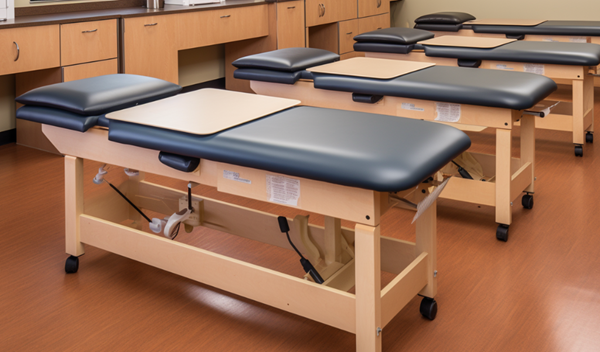

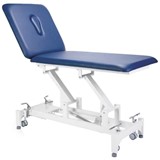

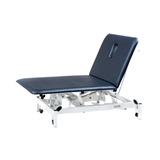


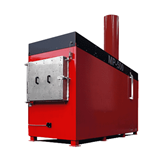



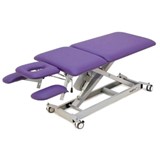
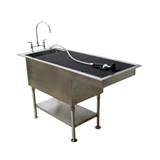
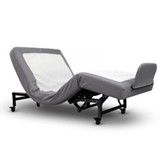
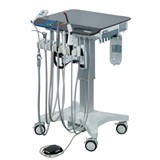


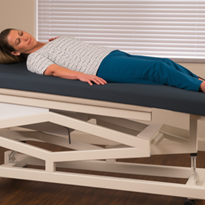
-205x205.png)